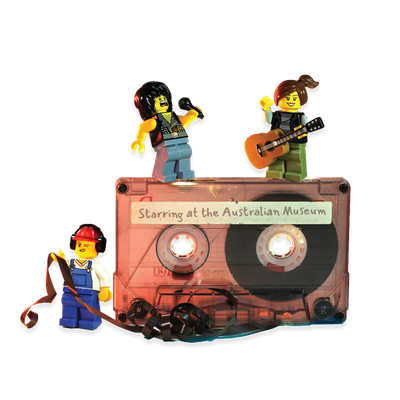Your search returned 41 results
By Page Type
By Tag
- All
- fish (966)
- blog (698)
- fishes of sydney harbour (400)
- First Nations (293)
- Blog (236)
- AMRI (169)
- archives (165)
- Aboriginal and Torres Strait Islander (135)
- Eureka Prizes (131)
- insect (126)
- Ichthyology (125)
- geoscience (109)
- minerals (102)
- climate change (98)
- podcast (94)
- Fish (91)
- Anthropology (89)
- International collections (80)
- Minerals Gallery (78)
- wildlife of sydney (78)
- Labridae (77)
- frog (73)
- gemstone (70)
- history (63)
- photography (63)
- staff (61)
- Mollusca (60)
- gem (59)
- Birds (58)
- education (57)
- Gems (56)
- Indonesia (56)
- AMplify (54)
- shark (54)
- people (53)
- exhibition (51)
- earth sciences (50)
- past exhibitions (50)
- Gobiidae (48)
- Pomacentridae (45)
- sustainability (45)
- Serranidae (44)
- science (43)
- lifelong learning (42)
- Earth and Environmental Science (41)
- Syngnathidae (41)
- Ancient Egypt (40)
- Bali (40)
- bird (40)
- dangerous australians (40)
-
Australia over time
https://australian.museum/learn/australia-over-time/Learn about our evolving landscape, Australian megafauna and other extinct animals and how we use fossils to relate the animals of the past with those of today.
-
What are trilobites?
https://australian.museum/learn/australia-over-time/fossils/what-are-trilobites/Trilobites are an extinct group of arthropods (jointed-legged animals) known from more than 10,000 fossil species.
-
The living dinosaurs
https://australian.museum/learn/dinosaurs/the-living-dinosaurs/Be afraid. One day your pet budgie or that marauding cockatoo may recall the more "primitive" instincts of their relatives. Be very, very afraid - these relatives include T. rex and Velociraptor! Birds are actually specialised theropod dinosaurs.
-
What are conodonts?
https://australian.museum/learn/australia-over-time/fossils/what-are-conodonts/What conodonts were remained a mystery for many years. These microfossils were variously thought to belong to annelid worms, arthropods, molluscs, chaetognaths (marine worms), fish (as teeth), and even plants. The discovery of an articulated 'conodont animal' was a significant breakthrough.
-
Preparing fossils, reconstructing the past
https://australian.museum/learn/australia-over-time/fossils/preparing-fossils-reconstructing-the-past/The very early stages of piecing together the animals and plants of the past involve removing their fossils from the rock and preserving them for study.
-
Fossil sites near Sydney
https://australian.museum/learn/australia-over-time/fossils/sites/fossil-sites-near-sydney/Fossils have been found at many sites near Sydney. Some of these are no longer accessible but coastal exposures still give the amateur collector ample chance of finding good fossils.
-
How are fossils found and excavated?
https://australian.museum/learn/australia-over-time/fossils/how-are-fossils-found/Finding fossils is a combination of hard work, chance and knowing where to look! Fossils are mostly found where sedimentary rocks of the right age are exposed, such as river valleys, cliffs and hillsides, and human-made exposures such as quarries and road cuttings.
-
How are dinosaur fossils formed?
https://australian.museum/learn/teachers/learning/dinosaur-fossils/Watch this animation to understand how dinosaurs became fossils over time.
-
Dinosaurs unit
https://australian.museum/learn/teachers/learning/dinosaurs-ps/Follow this Dinosaurs unit to deepen your knowledge and understanding of dinosaurs and fossils.
-
Tyrannosaurs – Meet the Family unit: Secondary
https://australian.museum/get-involved/services/touring-exhibits/touring-exhibition-tyrannosaurs/tyrannosaurs-secondary/Follow our Tyrannosaurs – Meet the Family unit to deepen your knowledge and understanding of tyrannosaurs. This exhibition has now ended and is currently touring the world.
-
Find out more
Tails from the Coasts
Special exhibition
On now![]()
-
Find out more
Burra
Permanent kids learning space
10am - 4.30pm![]()
-
Discover more
RELICS
Special Exhibition
Opens 16 August 2025![]()
-
Discover more
Minerals
Permanent exhibition
Open daily![]()





